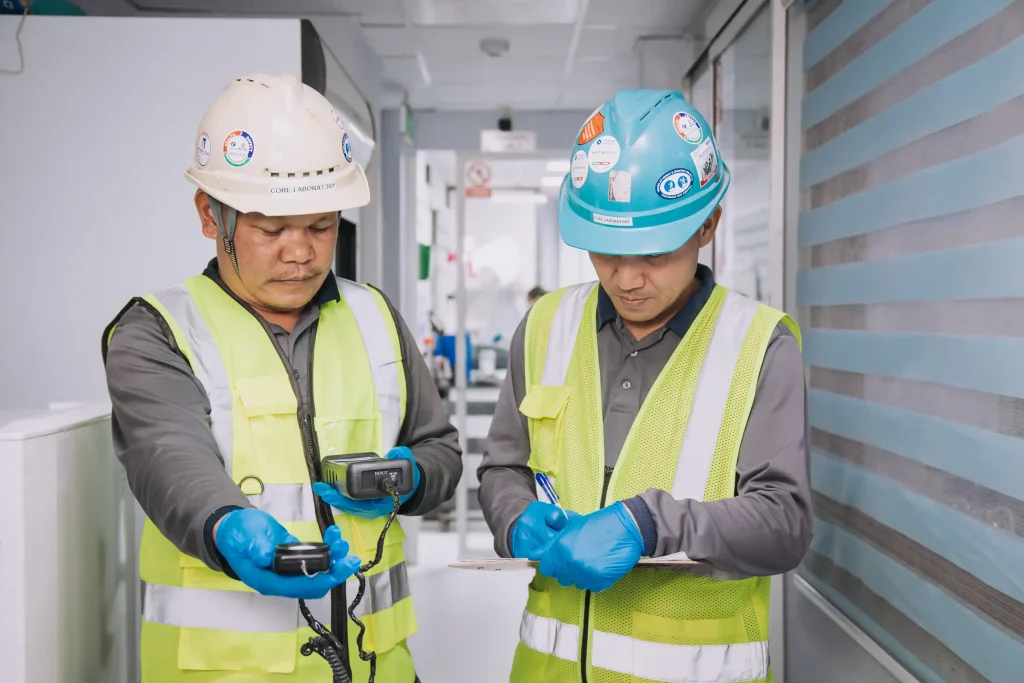
ILLUMINATION SURVEY
An illumination survey is conducted to assess the intensity of light in order to mitigate potential hazards and risks that could affect employee performance and efficiency in the workplace. This assessment aims to ensure that lighting conditions are optimal for safety and productivity.
The Trakhees specification has established limits for lighting illuminance levels that are appropriate for various operations:
- Operations not requiring accuracy like the ascertainment of large objects.
- Operations requiring some accuracy like the assembly of machine parts, grinding of grains and stones and similar primary industrial operations, chambers of steam boilers, sections where the product is put in large containers, equipment storehouses and apparatuses used in semi-accurate operations.
- Assembly of simple parts like turnery and molding which do not require accuracy and test conducted on products and machines and the sewing of light-colored clothes, the storing of foodstuff, the manufacturing of wooden planks, leather and similar operations.
- Operations requiring accuracy like turnery and lathe works which require average accuracy, and office work, final operations in production and similar operations.
- Operations which require a great deal of accuracy like the assembly of small parts and accurate turnery and fitter works, the cutting and reshaping of glass, accurate carpenting, office work, drawing and similar operations.
- Operations requiring extreme accuracy and patience such as tests conducted with extreme accuracy, tests conducted on small or subtle tools and machinery, the manufacturing of precious stones and watches, assembly of printing press letters, the weaving of dark colored clothes and similar operations.
CORE Laboratory has illuminance measuring instrument to monitor illumination level, which is common parameter, it measures the amount of light on unit surface at:
- Work point
- Work area or workplace
- Pathway or hallway
- Unit - Lux or Foot candles
Purpose of Illumination Survey
To assess the adequacy and uniformity of lighting to ensure safety, productivity, and comfort for employees. It helps identify areas that may require improved lighting, thereby reducing accidents, enhancing visibility, and meeting regulatory standards.
Effects of Adequate Light in the Workplace
- Improved productivity
- Enhanced mood and well-being
- Reduced mistakes
- Better visual comfort
Effects of Low Light in the Workplace
- Eye strain and fatigue
- Decreased productivity
- Negative mood effects
- Health risks
Enhancing Optimal Workplace Lighting
- Maximize natural light by designing workspaces with windows and open layouts. Encourage employees to take breaks outdoors.
- Provide task lighting that employees can adjust according to their specific needs and preferences.
- Implement a combination of ambient, task, and accent lighting to create a well-lit environment that caters to various activities and preferences.
- Ensure that all lighting fixtures are well-maintained and clean to maximize their effectiveness.

